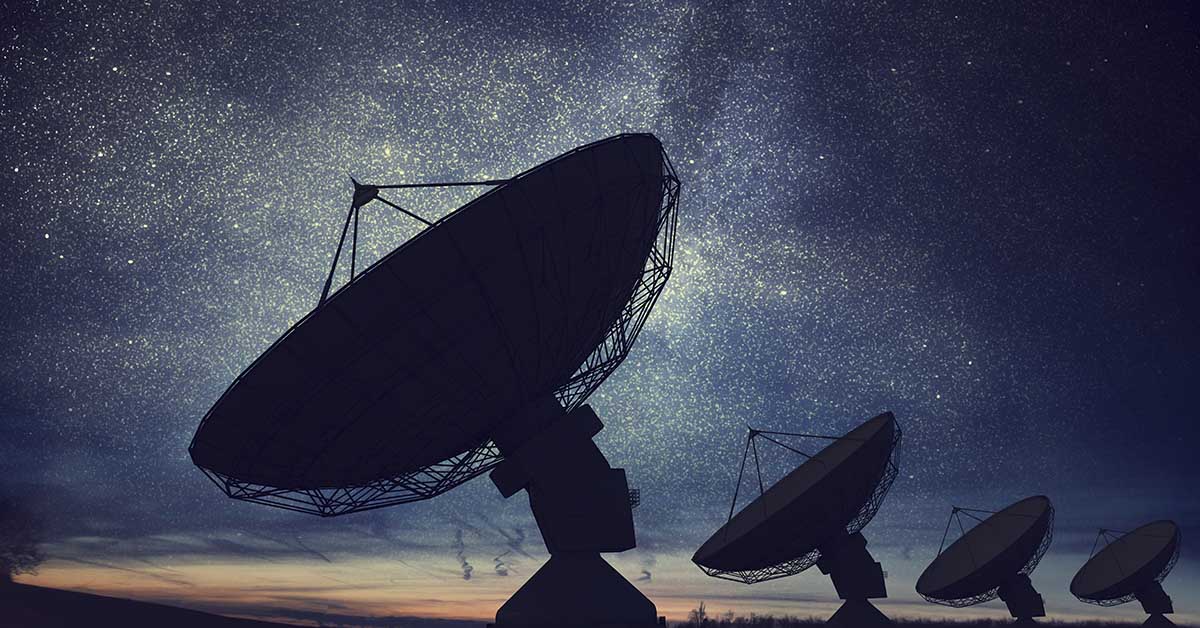Astronomers recently recorded a breaking radio signal from a remote galaxy nearly nine billion light years away. They detected the first radio transmission with a giant metrewave telescope in the early hours of Friday morning. The galaxy emitted an unprecedented frequency signal that traveled across the universe, where we finally received it on Earth. This is the most distant radio signal ever recorded, and it marks an incredible milestone in radio astronomy. Scientists believe this could help us better understand how galaxies form and evolve.
Most Distant Radio Signal Ever Recorded By Specialized Telescope
Recently, researchers in Canada and India detected a radio signal from a distant galaxy nearly nine billion light-years away. The researchers used the giant telescope known as SDSSJ0826 in India to detect this distant signal. This is one of the most powerful telescopes and can detect extremely weak and distant signals coming from galaxies on other sides of the universe. This giant telescope detected the wave after 9 billion years of traveling through space to reach Earth.
This discovery has changed our understanding of how far back in time we can see into space and our knowledge about galaxies outside our Milky Way Galaxy. (1) Radio telescopes use specialized receivers to pick up these low-frequency signals, which can then be amplified to detect the faintest of signals from across the universe. Metrewave radios are also used to detect higher frequencies emitted by astronomical objects like stars and planets.
Read: 50 Years Ago NASA Sent a Map Into Space to Help Aliens Find Earth—Now They’ve Got An Awesome Update
First Time Outside of the Milky Way Galaxy
Using a giant telescope, scientists could detect a single radio signal from a distant star in a galaxy named sdssj0826. This is the first time that metrewave radio signals have been detected outside of our own Milky Way Galaxy. The scientists used the giant metrewave telescope to detect the new signals and analyze the gas composition of sdssj0826. The results showed that this single radio signal was sent from a galaxy nearly nine billion light years away. With this knowledge, scientists can use more advanced telescopes to search even further out in space for new signals from distant galaxies.
The most interesting thing about this discovery is that the waves are emitted on a specific wavelength known as the 21-centimeter line, which is usually associated with neutral hydrogen atoms. This gives us a unique glimpse into what kind of material lies in these galaxies and even more intriguingly, what kinds of life forms may live there.
A Look Back In Time
Astronomer Arnab Chakraborty, from the Trottier Space Institute, has been studying a distant galaxy nearly nine billion light years away and recently received a radio signal emitted from it. This is an incredible feat, considering the warped space that exists between our planet and this remote galaxy. By magnifying the signal with atomic hydrogen, Chakraborty was able to receive this distant signal. The giant telescope in India was able to pick up the faint signal due to gravitational lensing. This is a naturally occurring phenomenon. This breakthrough could lead to further discoveries and insight into our universe.
“It’s the equivalent to a look-back in time of 8.8 billion years” Chakraborty explained. “A galaxy emits different kinds of radio signals. Until now, it’s only been possible to capture this particular signal from a galaxy nearby, limiting our knowledge to those galaxies closer to Earth.” (2)
Study co-author Nirupam Roy explained this a little further:
“Gravitational lensing magnifies the signal coming from a distant object to help us peer into the early universe.” he said.
While this is the first time scientists have been able to analyze signals from another galaxy and from such a long distance, it likely won’t be the last. This could be the kick-start into our capabilities of studying even further into outer space, deepening our understanding of the universe in which we live.
Keep Reading: Earth’s Core May Be Causing Strange ‘Anomalies,’ Study Suggests
Sources
- “Radio signal from 8 billion light-years away could reveal the secrets of the universe’s ‘dark age’.” Live Science. Ben Turner. January 20, 2023
- “Radio signals detected on Earth from galaxy 9,000,000,000 light-years away.” Mirror. Charlie Duffield. January 21, 2023.

